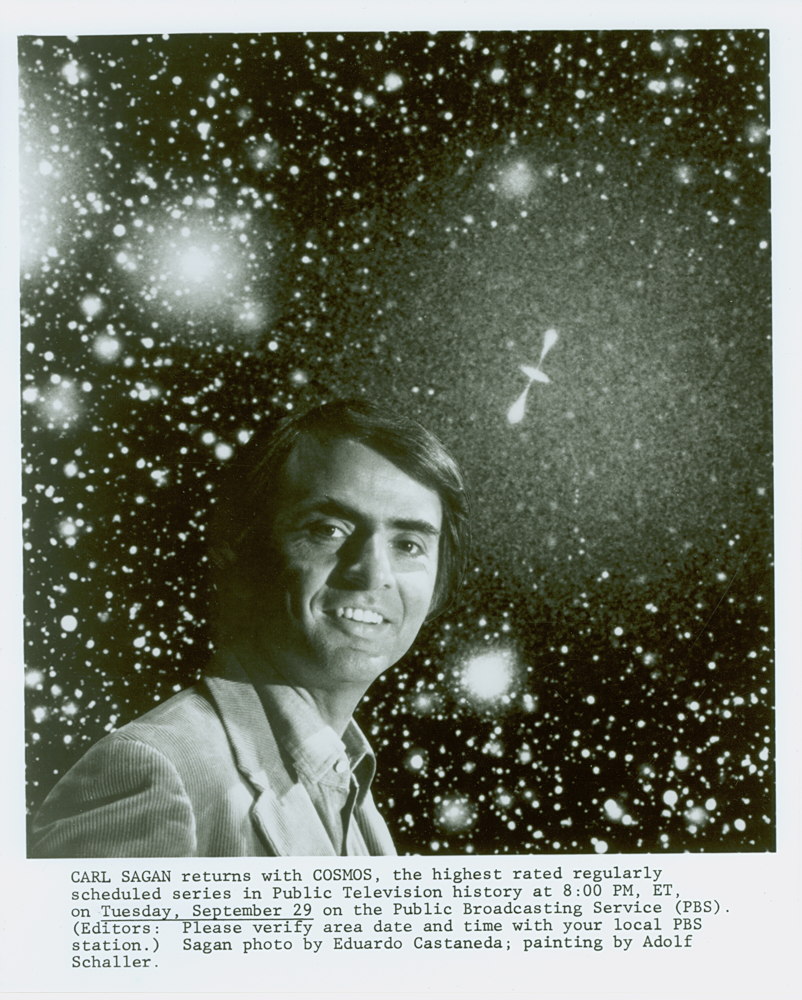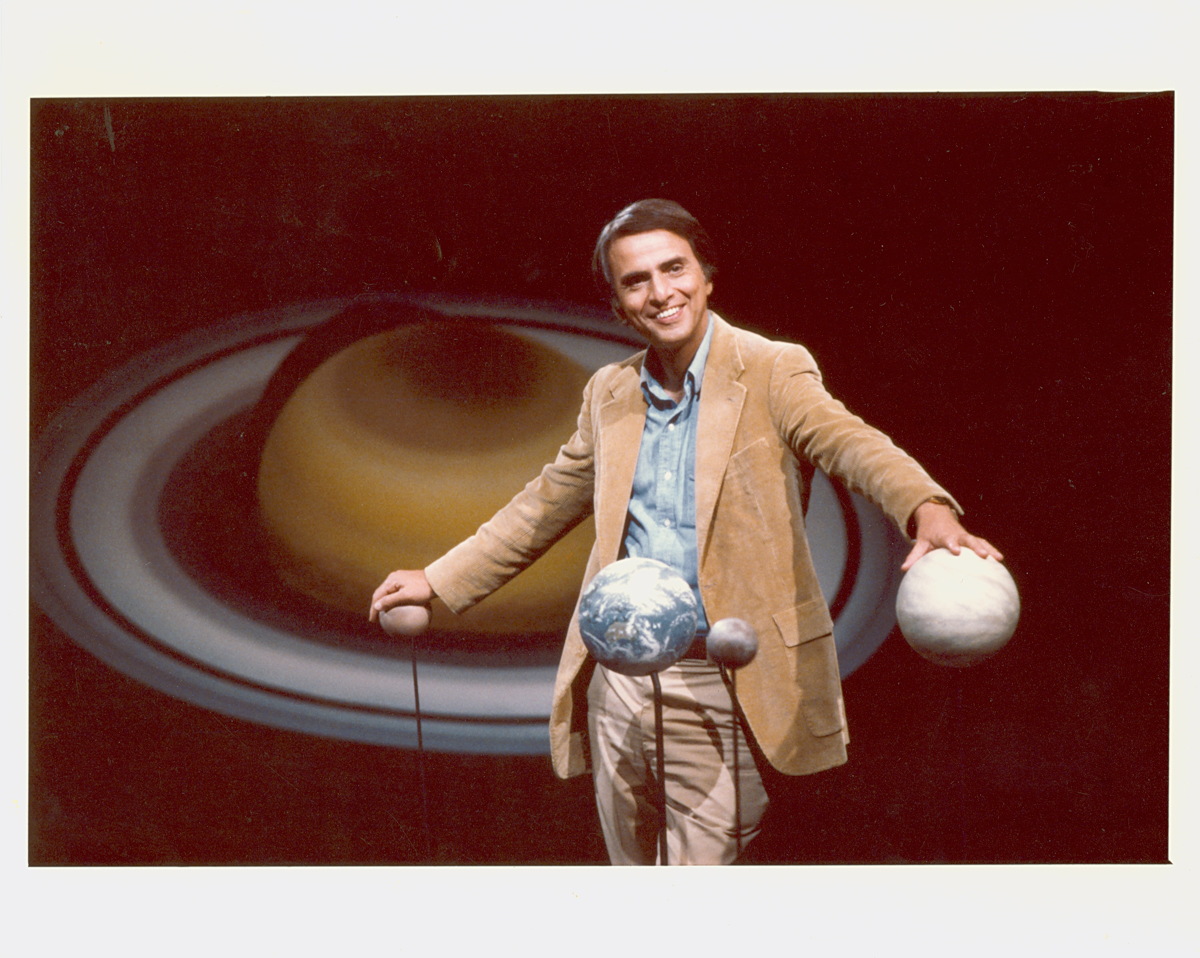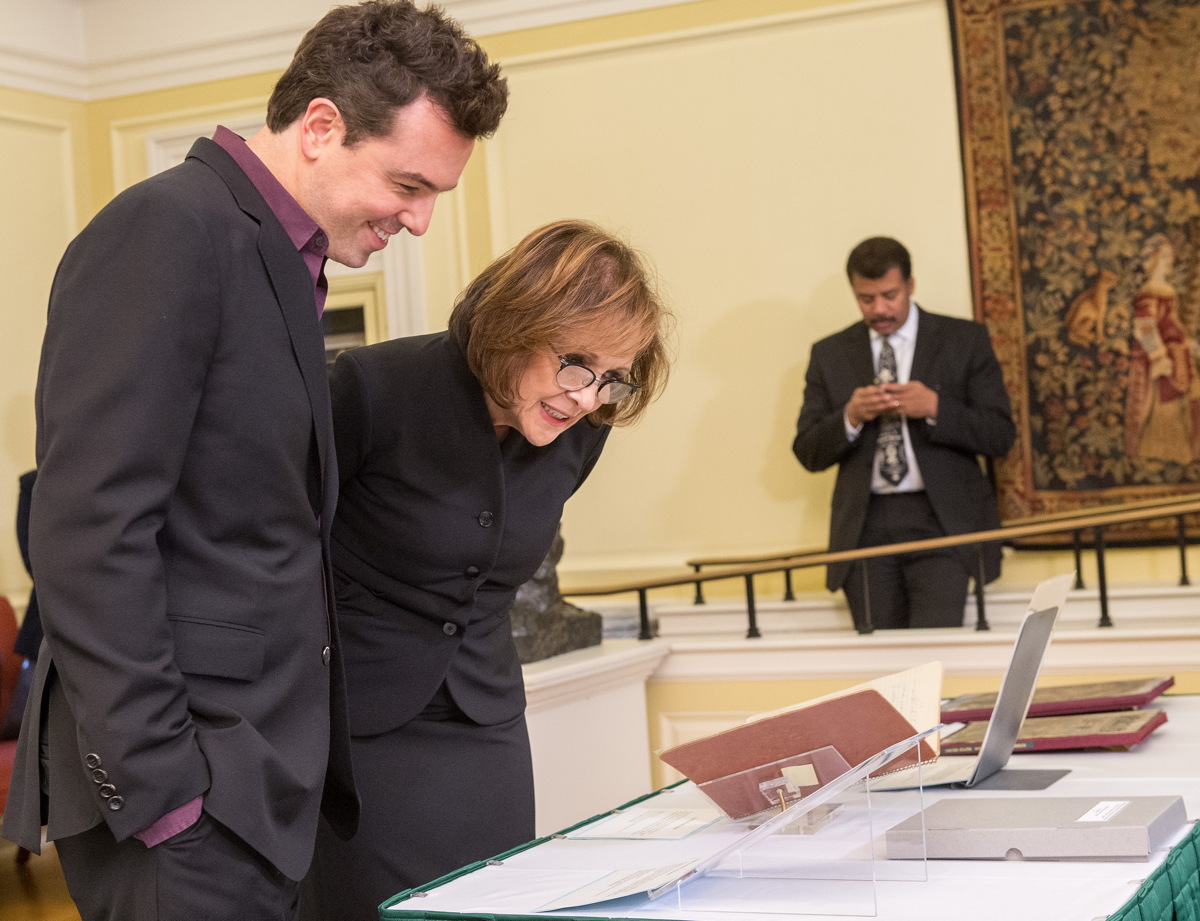Carl Sagan's Legacy: From the 'Pale Blue Dot' to Interstellar Space

Famous astronomer Carl Sagan brought the wonders of the universe to people living on the planet he dubbed the "pale blue dot."
Although Sagan died in 1996 due to complications from a rare bone-marrow disease when he was 62, his influence on the public still lives on today. His groundbreaking miniseries, "Cosmos: A Personal Voyage," used visual effects and down-to-earth commentary to bring science into people's homes.
A reboot of the show, called "Cosmos: A Spacetime Odyssey," is set to premiere on Fox Sunday (March 9). Hosted by astrophysicist Neil deGrasse Tyson, the "Cosmos" reboot uses Sagan's unique brand of education to bring his message of science literacy to a new generation of viewers. Tyson also has an early memory of Sagan's influence on his life and work. [See Carl Sagan's legacy in photos]
"I was just a 17-year-old kid from the Bronx with dreams of becoming a scientist, and somehow, the world's most famous astronomer found time to invite me to Ithaca in upstate New York and spend a Saturday with him," Tyson said during the first episode of the "Cosmos" reboot. "I remember that snowy day like it was yesterday."
"I already knew I wanted to be a scientist, but that afternoon, I learned from Carl the kind of person I wanted to become," Tyson added. "He reached out to me and to countless others, inspiring so many of us to study, teach and do science. Science is a cooperative enterprise spanning the generations."

Carl Sagan also inspired another person who's helping with the "Cosmos" reboot. Seth MacFarlane —creator of "Family Guy" and an executive producer of the new "Cosmos" — has been a fan of Sagan since he was a child.
"I have always been interested in science," MacFarlane said at a recent "Cosmos" event. "I remember seeing the original 'Cosmos' as a child and as an adolescent and as an adult. I've seen it a number of times."
Get the Space.com Newsletter
Breaking space news, the latest updates on rocket launches, skywatching events and more!
Sagan also put life on Earth into perspective. He orchestrated the "pale blue dot" photo taken by Voyager from more than 4 billion miles (6 billion kilometers) away, showing Earth as a tiny point of light, as humans have never seen it before.
"Every saint and sinner in the history of our species lived there on the moat of dust suspended in a sunbeam," Sagan said of the photo. "The Earth is a very small stage in a vast, cosmic arena. Think of the rivers of blood spilled by all those generals and emperors so that, in glory and triumph, they could become the momentary masters of a fraction of a dot."

Sagan was more than a public figure and science communicator; he also contributed to science and exploration. Voyager 1, now the farthest man-made object ever launched into space, carries a piece of Sagan's legacy with it into interstellar space: Each of the Voyager probes holds a golden record inscribed with messages and sounds from Earth curated by a committee chaired by Sagan.
"The spacecraft will be encountered and the record played only if there are advanced spacefaring civilizations in interstellar space," Sagan said. "But the launching of this bottle into the cosmic ocean says something very hopeful about life on this planet."
Sagan was the first to create a greenhouse model for Venus' atmosphere, showing that the planet had much higher temperatures than previously thought. Sagan was also a NASA adviser for the Viking mission to Mars (the first U.S. lander on the Red Planet) and other missions in the solar system.
Follow Miriam Kramer @mirikramer and Google+. Follow us @Spacedotcom, Facebookand Google+. Original article on Space.com.
Join our Space Forums to keep talking space on the latest missions, night sky and more! And if you have a news tip, correction or comment, let us know at: community@space.com.

Miriam Kramer joined Space.com as a Staff Writer in December 2012. Since then, she has floated in weightlessness on a zero-gravity flight, felt the pull of 4-Gs in a trainer aircraft and watched rockets soar into space from Florida and Virginia. She also served as Space.com's lead space entertainment reporter, and enjoys all aspects of space news, astronomy and commercial spaceflight. Miriam has also presented space stories during live interviews with Fox News and other TV and radio outlets. She originally hails from Knoxville, Tennessee where she and her family would take trips to dark spots on the outskirts of town to watch meteor showers every year. She loves to travel and one day hopes to see the northern lights in person. Miriam is currently a space reporter with Axios, writing the Axios Space newsletter. You can follow Miriam on Twitter.









